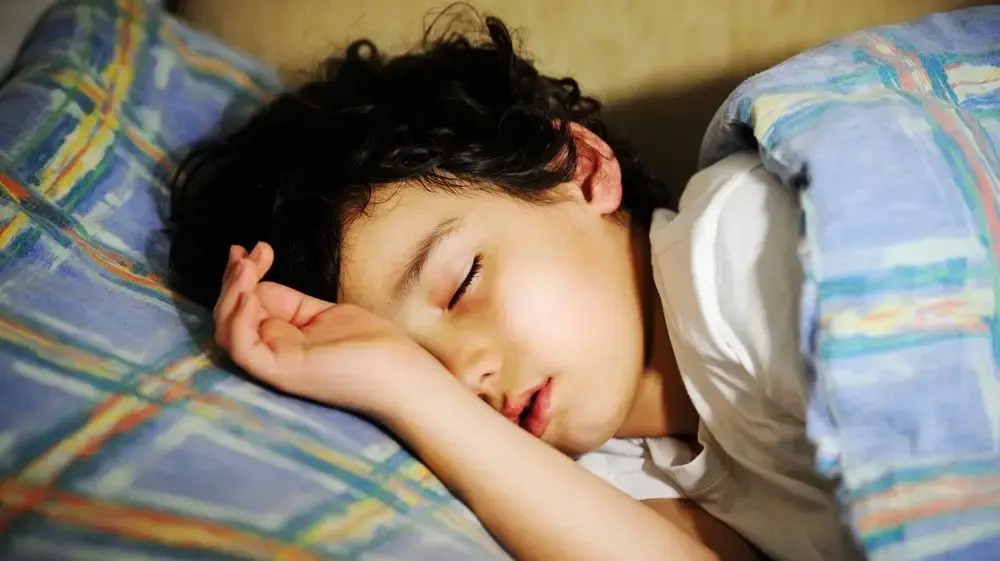Does your child grit his teeth?
This way you will identify if it is dangerous for him
It is less talked about, but children also suffer from snoring and gnashing of teeth and the reasons for this are many.
An expert explains when to start worrying and why it is important to go to the dentist
Dr. Pessia Friedman Robin
20/07/2022
Wednesday, July 20, 2022, 08:10 Updated: 08:25
Share on Facebook
Share on WhatsApp
Share on Twitter
Share on Email
Share on general
Comments
Comments
Squeaking teeth or snoring?
A sleeping boy (Photo: ShutterStock)
Does your child grit his teeth at night?
Did you hear them snoring?
Do they wake up suddenly several times a night and breathe heavily?
Is your sleep not calm?
Do they breathe mostly from the mouth and less from the nose?
Do they suffer from ADHD?
Are they overweight?
If you answered yes to one or more questions - they may be suffering from sleep-related breathing disorder (SRBD) and it is recommended to seek medical advice (dentist or ENT doctor and it is better for both together).
Sleep apnea disorder in children is a general term that describes difficulty breathing during sleep (partial to complete blockage of the upper airways) and includes a wide range from mild and frequent snoring to a condition of airway obstruction that will result in multiple breathing pauses per hour (obstructive sleep disorder, obstructive sleep apnea).
These are very short pauses (apnea) or decreased breathing rate (hypopnea).
They can appear many times during an hour of sleep and impair sleep quality and oxygen saturation to the brain.
How common is it?
The prevalence in children ranges from 8-27 percent to snoring, while in the severe degree of obstructive disorder it is about 1-5 percent of all children.
More on Walla!
Hair, skin and nails: a dietary supplement that changes the rules of the game
In collaboration with SupHerb
What are the common causes of sleep-disordered breathing?
The most common cause is obstruction of the upper airways caused due to anatomical (structural) obstruction - enlargement of tonsils and / or adenoids (third tonsil) and only in a few cases - obstruction of the nasal cavity, deviation of the nasal septum or enlargement of the nasal conchae and allergies.
There is also a knot with narrow tooth arches, tooth density, a high palate, a wide and enlarged tongue and / or a tied tongue.
In the risk group are children who suffer from neurological disorders, changes in facial structure or obesity.
Sleep apnea usually occurs between the ages of two and seven, ages when the tonsils occupy the most volume in the pharynx.
The disorder occurs in boys and girls equally, and there is a strong family connection between the children with the disorder and first-degree family members who have suffered or are suffering from the same problem.
What has tooth grinding got to do with it?
Squeaking teeth in sleep known in professional language as bruxism of sleep is a range of involuntary behaviors of activating the muscles while sleeping.
The phenomenon is very common in children (between 10 and 40 percent) and usually does not cause harm.
In severe cases of gnashing of teeth there may be damage to the teeth such as: loss of tooth material, sensitivity to drinking and eating cold foods and functional disorders of the jaw joint that include pain in the chewing muscles in the face and temple.
The causes of gnashing of teeth are not entirely clear but today a link has been found between gnashing of teeth and respiratory obstruction in sleep so that at the end of each occlusive event the masticatory and neck muscles perform strenuous activity to open the blocked airways.
In a way the squeaking of the two is a protective factor.
There are other anatomical factors associated with the grinding of the teeth, such as the upper jaw with a narrow arch of the tooth, the lower lower jaw in relation to the upper jaw, and more.
Studies in children who underwent surgery to remove the obstruction in the airways - showed that the gnashing of teeth also improved and / or disappeared.
Can have devastating consequences.
Girl at the dentist (Photo: ShutterStock)
Why is it really important to diagnose this condition?
Sleep apnea disorder is associated with decreased sleep oxygen saturation and disturbed sleep.
Therefore, a lack of diagnosis of this condition has devastating consequences for the overall health and quality of life of the child.
Studies in recent years show a link to cognitive problems, difficulty concentrating and behaving during the day when some children who actually suffer from sleep-disordered breathing are diagnosed and treated inadvertently as suffering from ADHD.
In addition, sleep-disordered breathing has been linked to growth and development disorders, daily drowsiness and an effect on the cardiovascular system.
Obstruction of the upper airways also causes breathing through the mouth, narrow jaws and a typical and narrow facial structure.
Mouth breathing itself carries a greater risk of tooth decay and gingivitis.
Squeaking teeth can be related to airway obstruction but even if not - try to check what it is due to and whether treatment is needed to prevent other damage to the teeth and the musculoskeletal system.
What is the treatment for obstructive sleep apnea?
The first step in any treatment is to correctly diagnose and locate the causative agent.
By examining the oral cavity and by questioning the parents and filling out a dedicated sleep questionnaire for children such as (pediatric sleep questionnaire), the treating dentist will be able to locate the cause and recommend clear follow-up and treatment.
• If the obstruction is of an anatomical origin: enlarged tonsils and / or incisors, tongue connected, then the treatment is surgical removal of the obstruction (tonsils or adenoids).
Studies have shown that surgical treatment has also improved the problems of concentration and behavior associated with the problem.
• If the barrier is two arches that produce a high palate and a density of two, consult orthodontic treatment to expand the arches.
• If it is overweight - refer to a dietitian.
• If the blockage is due to an incised nasal septum or nasal polyps - referral to the nasopharynx in children.
Filling out the questionnaire will make it possible to know how severe the degree of obstruction is and its effect on the child's quality of life
And in any case the surest way to determine the degree of severity is by performing a test in a sleep lab.
What is the role of the dentist?
Today we understand that the role of the dentist is critical in diagnosing and treating breathing problems in sleep and bruxism.
As a medical factor who regularly meets the child sometimes he is also the first to diagnose the risk factors.
Thus, the dentist's ability to diagnose and refer for clear follow-up in the ENT or referral for treatment by an orthodontist and / or communication clinician and / or physiotherapist.
A dentist will look at the airway from the mouth, the shape of the dental arch and the tongue and tonsils.
He will look at the function of the tongue, whether it is related and how the various consonants are pronounced.
He will examine the marks on the teeth, cheeks and tongue that indicate gnashing of teeth and / or a blockage in sleep and will be asked about sleeping habits and behavior.
The dentist is obliged, in addition to examining the oral cavity, to also question the parent about the child's oral habits, including questions related to the quality of his sleep.
Early diagnosis is important.
After the diagnosis is made, it will be decided on the need for the intervention of an ENT doctor or orthodontic intervention (orthodontics) in the case of productive jaws, in order to prevent cumulative behavioral and health damage.
Dr. Pessia Friedman Rubin is a dentist who treats facial pain, chewing disorders and dental sleep disorders at Clalit Smile Clinics.
health
parenthood
Child health
Tags
Teeth
Teeth grinding
Snoring
Children









/cloudfront-eu-central-1.images.arcpublishing.com/prisa/YU6JYS64KNDZNHHGXA3QMTYNGY.jpg)